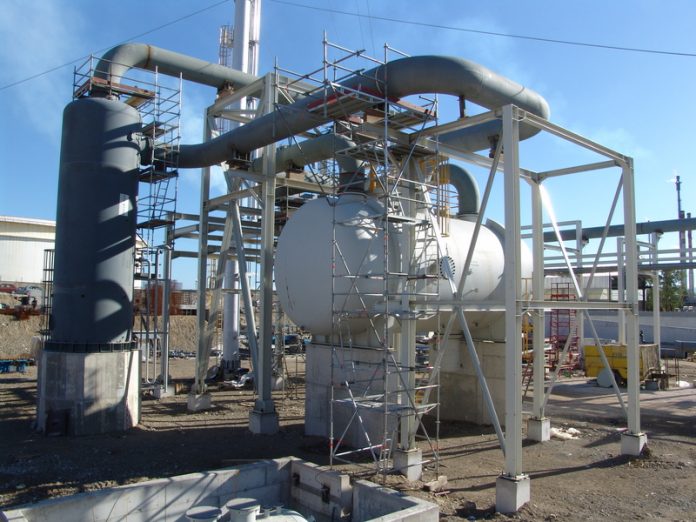Morry Markowitz, President of the Fuel Cell and Hydrogen Energy Association argues that hydrogen is an energy powerhouse with unlimited potential for a cleaner and self-sustaining world in the future
Hydrogen is not only the lightest and most abundant element in the universe, but it also is an energy powerhouse with the potential to move the world towards a cleaner, a more self-sustaining and efficient path forward.
In the U.S., millions of metric tons of hydrogen are produced annually, predominantly from natural gas in a process known as steam methane reforming. For decades, it has then been safely stored, transported, and used – primarily in the fertilizer, agriculture, food, chemical, and petrochemical industries. Today, hydrogen is being used in a new way: working in fuel cells to provide clean, reliable power for a range of applications.
For mobility, fuel cells are being deployed in a portfolio of zero-emission vehicles – cars, forklifts, buses, medium and heavy-duty trucks, and even trains. Fuelling these vehicles requires investment in infrastructure and a vision towards creating a sustainable supply of hydrogen. More than ten years ago, California mandated that 33% of the hydrogen sold at fuelling stations must be renewable, a goal which industry has consistently exceeded. There are now 39 hydrogen fuelling stations in the state, and new ones are slated to begin operation in the Northeast U.S. Other countries, including Japan, Germany, and China, collectively have more than 100 stations open, with the goal of constructing many more in the coming years.
Outside of the fuel cell cars utilising these stations, other transportation sectors are quickly increasing the demand for hydrogen. While some markets such as medium and heavy-duty trucking are just beginning to utilise fuel cell technology, others are more established. FCHEA member Plug Power’s customers, collectively with more than 25,000 fuel cells in material handling vehicles, have surpassed an impressive 16 million hydrogen fills.
To help meet this growing need, the public and private sector are devoting resources into research, development, and large-scale deployment of both conventional and renewable hydrogen generation. The U.S. Department of Energy launched its H2@Scale initiative to bring together the National Laboratories, industry, utilities and other stakeholders to advance wide-scale hydrogen production, storage, and utilisation for both the stationary and transportation sectors. Industrial gas companies are investing heavily in both new and expanded facilities in the U.S., including a $150 million world-scale liquid hydrogen production plant by Air Liquide in the Western U.S.; two new liquid hydrogen production plants in Texas and California by Air Products; a new hydrogen production facility in Delaware from the Linde Group; and a $40 million expansion to a United Hydrogen plant in Tennessee.
On the renewable side, solar and wind electrolysis – generating hydrogen by ‘splitting’ water – is becoming more common, as is the use of biogas to produce hydrogen from organic waste. Most recently, FCHEA members Toyota and Fuel Cell Energy announced the installation of a multi-megawatt fuel cell power plant at the Port of Long Beach in California that will generate not only electricity but 100% renewable hydrogen fuel onsite via biogas from dairy cattle waste. Toyota will purchase the hydrogen for its fuel cell-powered cars and heavy-duty trucks that are deployed at the port.
Our industry and the customers who use fuel cells in everyday operations rely on the availability of a safe, cost-effective, and increasingly renewable supply of hydrogen, and there have been significant technological advancements in renewable generation, compression and storage of hydrogen. It has been an amazing ride that is only just beginning – we can’t wait to see where it goes.
Morry Markowitz
President
Fuel Cell and Hydrogen Energy Association
Tel: +1 202 261 1331












“safely stored”???
What about the hydrogen filling station in the USA that exploded back in 2012??
1. It is still a non renewable as 95% of hydrogen comes from gas
2. It is so hideously expensive that they always have to give it away to get people to use
Etc etc
Hi! Thank you for your comment. Interesting thoughts! To ensure we get you the appropriate answers please contact the author of the article here info@fchea.org
How many gas stations have exploded in that time?
Riy – so because of something that occurred 7 years ago we shouldn’t pursue hydrogen and fuel cell technology? Hydrogen has been used in industry for decades and is extremely safe as it is lighter than air and disperses upwards instead of pooling on ground like gasoline does in the rare occurance of a leak. Technology is rapidly progressing and from what I am seeing, the pathway to renewable generation is there and continuing to grow.
What about using the abundance of geothermal energy readily available in multiple areas around the world to generate hydrogen cleanly, then ship it to market, similar to LNG?
Hi! Thank you for your comment. Interesting thoughts! To ensure we get you the appropriate answers please contact the author of the article here info@fchea.org